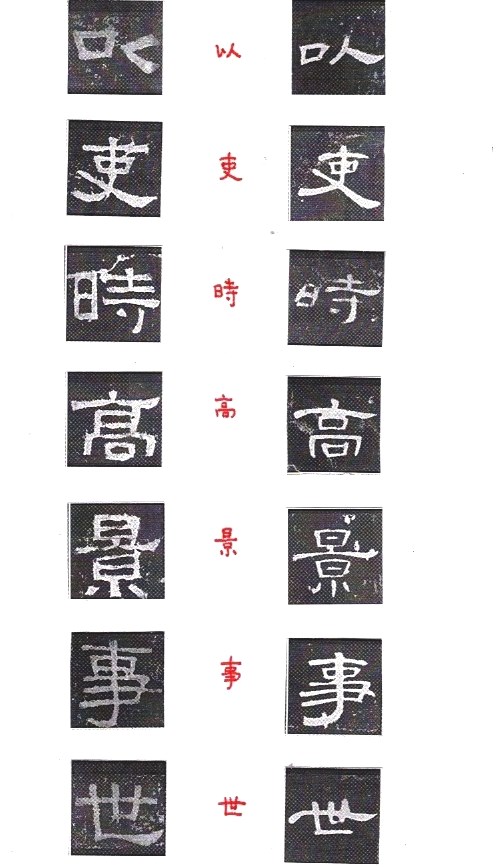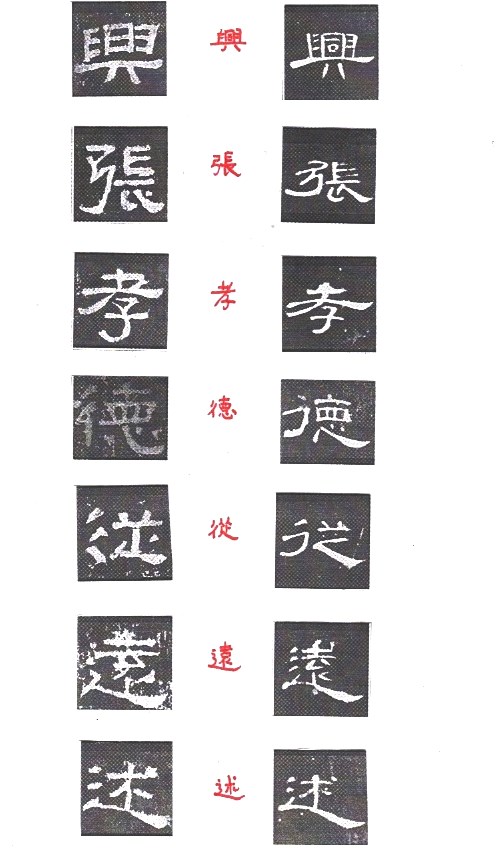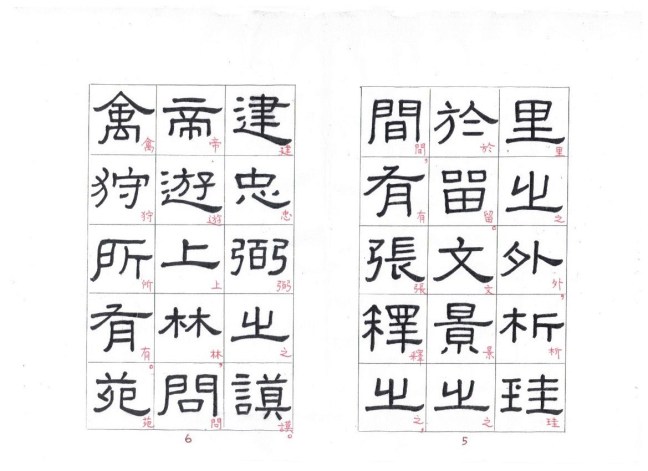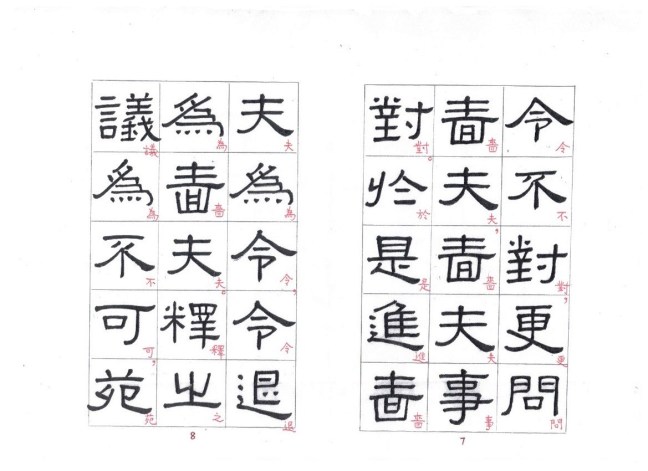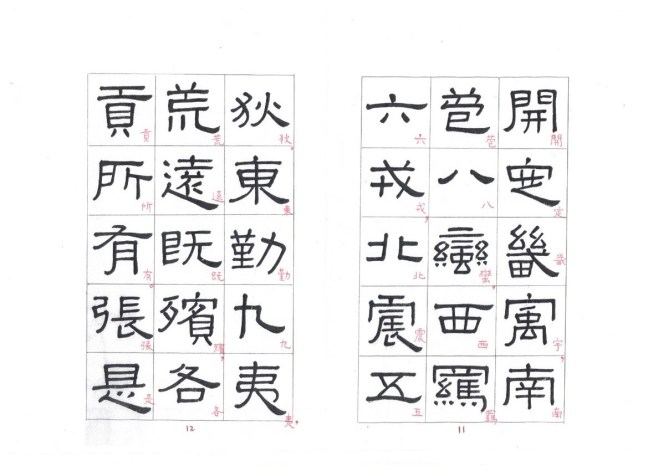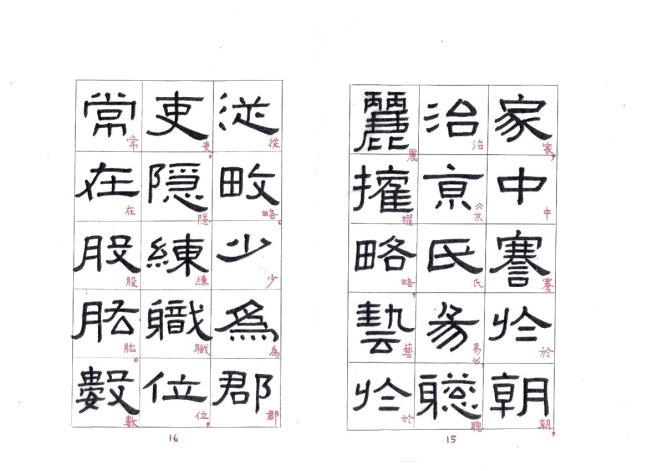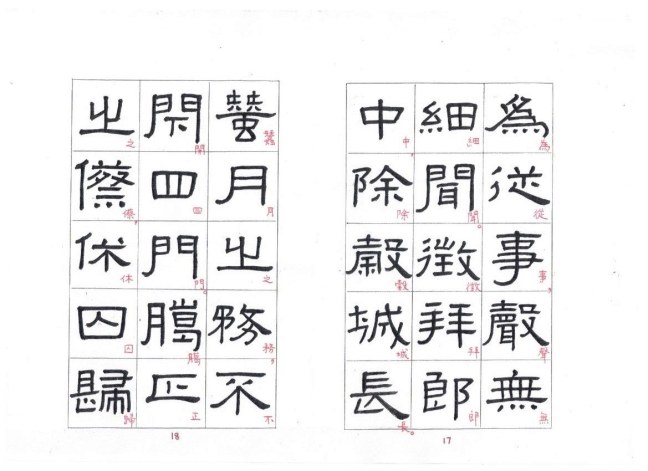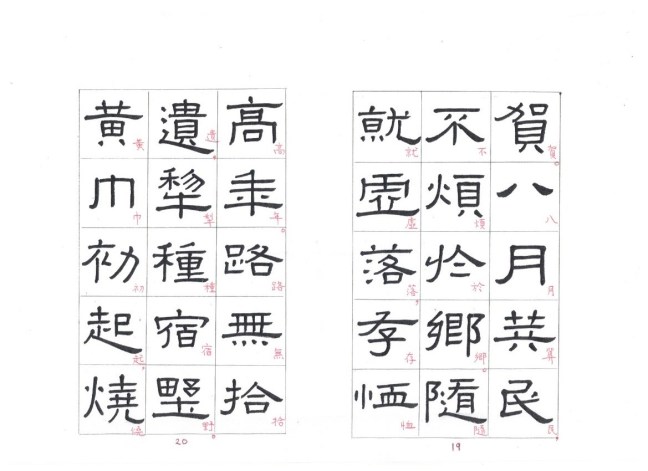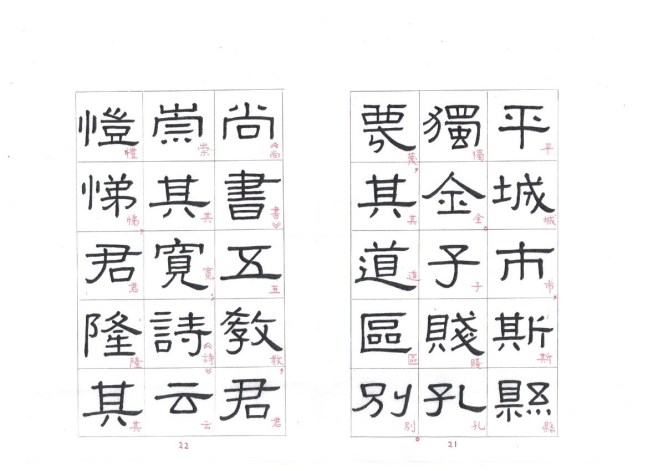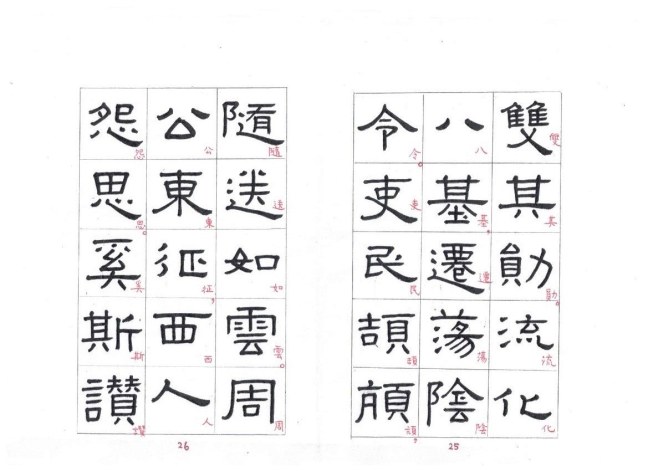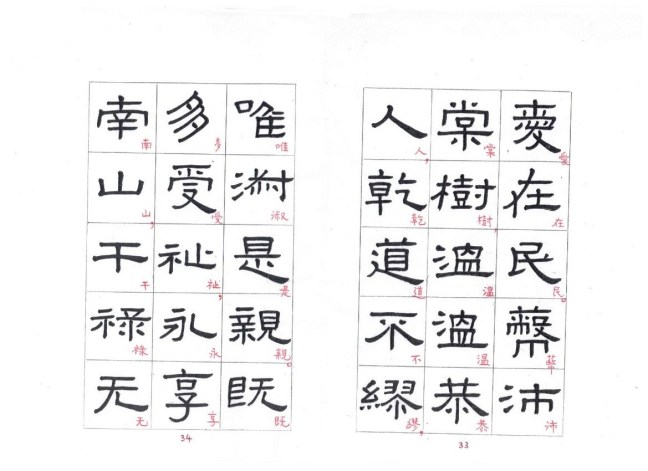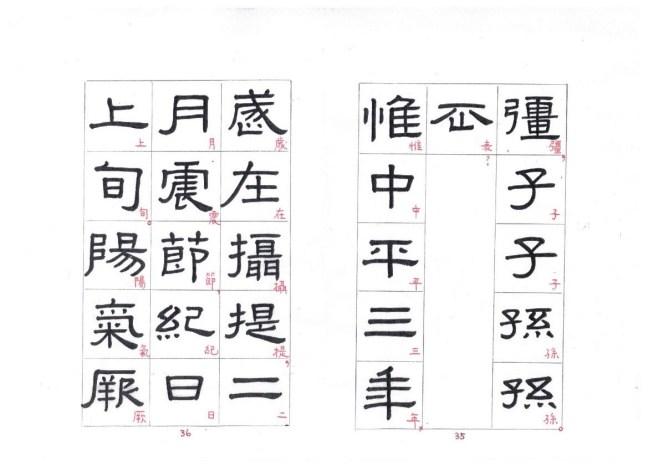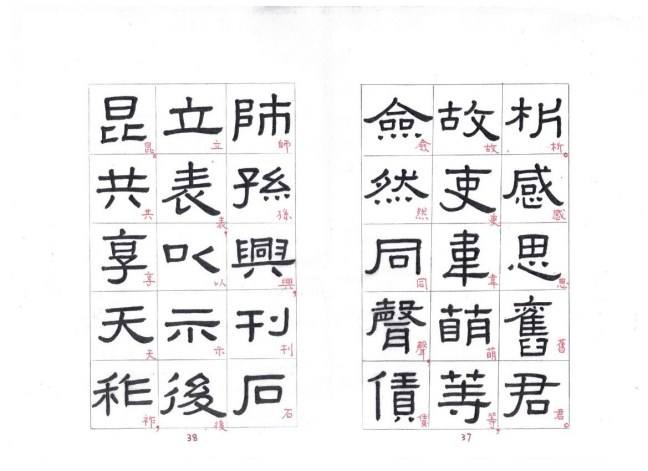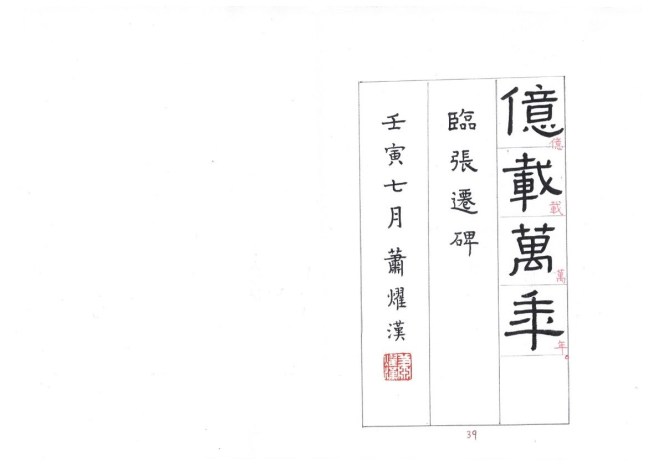

The full name of Zhang Qian Bei 張遷碑 is 漢故穀城長盪陰令張君表頌 (Hàn gù Gǔ Chéng zhǎng Dàng Yīn lìng Zhāng Jūn Biǎo Sòng). The stele was erected during the Eastern Han, 186 CE. The text at the front has 15 columns, with each column contains a maximum of 42 characters, the last column only contains 12 characters. The stele was unearthed in Dongping, Shandong province (山東東平縣) during early Ming Dynasty about 600 years ago. The stele is now preserved in Daimiao Temple, Tai’an, Shandong province (山東泰安岱廟).
The ancestors of Zhang Qian (張遷) held important offices in the government of the Han Dynasty. They were virtuous from generation to generation. Zhang Qian treated his parents and grandparents with filial piety and other people with reverence. He also held significant office in the government. He was an upright official with good strategic administrative skills. He served as the county magistrate of Gucheng (穀城縣長) for eight years. He was diligent and cared for the people. The people enjoyed peace and prosperity and had a great rapport of him. Zhang Qian was later appointed as the magistrate (縣令) of Dangyin County (蕩陰縣). The people of Gucheng (穀城) farewelled him and erected a stele to commemorate the achievements of Zhang Qian.
The stele also recorded an interesting incident of one of Zhang Qian’s ancestors called Zhang Shizhi (張釋之). One day Shizhi accompanied Emperor Wen (文帝) on a tour of the imperial park (上林). Emperor Wen asked the minister (令) how many animals were there in the park, but minister did not know the answer. Emperor Wen asked a minor staff or a labourer (嗇夫) the same question and the minor staff was able to answer. Emperor Wen promoted the minor staff to be the ministerial position, and the minister was demoted to be a minor staff. Zhang Shizhi persuaded to Emperor not to do this. The minor staff was just a talkative and showy person who did not have the knowledge and the ability to take up the responsibility of a minister. Emperor Wen took Zhang Shizhi’s advice. This incident shows the ancestor of Zhang Qian was an upright and courageous person.
The text of the stele is as follows:
漢故谷城長盪陰令張君表頌
君諱遷,字公方,陳留己吾人也。君之先出自有周,周宣王中興,有張仲,以孝友為行,披覽《詩·雅》,煥知其祖。高帝龍興,有張良,善用籌策在帷幕之內,決勝負千里之外,析珪於留。文景之間,有張釋之,建忠弼之謨。帝游上林,問禽狩所有。苑令不對,更問嗇夫,嗇夫事對。於是進嗇夫為令,令退為嗇夫。釋之議為不可,苑令有公卿之才,嗇夫喋喋小吏,非社稷之重。上從言。孝武時有張騫,廣通風俗,開定畿宇,南苞八蠻,西羈六戎,北震五狄,東勤九夷,荒遠既殯,各貢所有。張是輔漢,世載其德,爰既且於君,蓋其繵糹連。纘戎鴻緒,牧守相係,不殞高問。孝弟於家,中謇於朝,治《京氏易》,聰麗權略,藝於從畋。少為郡吏,隱練職位,常在股肱。數為從事,聲無細聞。徵拜郎中,除穀城長。蠶月之務,不閉四門。臈(臘)正之祭,休囚歸賀。八月算民,不煩於鄉。隨就虛落,存恤高年。路無拾遺,犁種宿野。黃巾初起,燒平城市,斯縣獨全。子賤孔蔑,其道區別。《尚書》五教,君崇其寬;《詩》云愷悌,君隆其恩;東里潤色,君垂其仁。邵伯分陝,君懿於棠。晉陽佩瑋,西門帶弦,君之體素,能雙其勛。流化八基,遷蕩陰令。吏民頡頏,隨送如雲。周公東征,西人怨思。奚斯贊魯,考父頌殷。前哲遺芳,有功不書,後無述焉。於是刊石豎表,銘勒萬載。三代以來,雖遠猶近,《詩》云舊國,其命惟新。
於穆我君,既敦既純,雪白之性,孝友之仁。紀行午采(來)本,蘭生有芬,克岐有兆,綏御有勛。利器不覿,魚不出淵,國之良幹,垂愛在民。蔽沛棠樹,溫溫恭人,乾道不繆,唯淑是親。既多受祉,永享南山,干祿无疆,子子孫孫。
惟中平三年,歲在攝提,二月震節,紀日上旬。陽氣厥析,感思舊君。故吏韋萌等,僉然同聲,賃師孫興,刊石立表,以示後昆。共享天祚,億載萬年。
The shape of the characters of Zhang Qian Bei is square and robust (剛健). The strokes are sharp and angular (稜角分明). This style of writing is called fang bǐ (方筆 ‘square brush’). Fang bǐ is prominent mostly in the beginning and the end of each stroke. At the turning point, the stroke of the brush changes abruptly, forming a stroke with edges and angles, like a knife cutting an axe. The fang bǐ is more commonly used in clerical script and regular scripts.
Another style of writing is called yuan bǐ (圓筆’round brush’). The lines are more slender and smooth. Some strokes are undulating having a smoothly rising and falling form of outlines. The shape of the character is less square and more rectangular or oblong (長方或橢園形). Cao Quan Bei (曹全碑) is a typical example of yuan bǐ style of writing, a ‘beautiful and shapely’ style.
Some more characters of Zhang Quan Bei and Cao Quan Bei are put side by side for comparisons.
My copy of the stele is as follows:
Professor WONG Wai Cheong (黄維琩教授)(1902-1993) was an scholar of Han Bei (漢碑). He was an expert of both Cao Quan Bei (曹全碑) and Zhang Qian Bei. The followings are fine examples of his writings of Zhang Qian Bei.


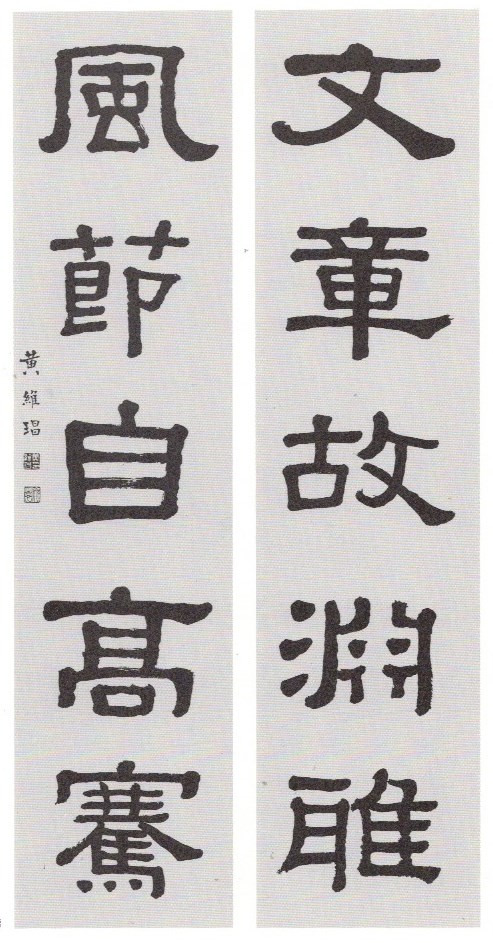

Writings by Wu Zifu (吳子復) (1899-1980)

He Shaoji (何紹基)(1799-1873) was a great scholar and calligrapher in the Xing Dynasty. Please visit the following links to see his writings of Zhang Qian Bei.
https://kknews.cc/culture/arq832n.amp (何紹基臨《張遷碑》全本)
https://shici.ltd/7218.html (東洲居士何紹基隸書真跡欣賞臨張遷碑(共32張圖片)|史賜書法字帖)
The characters of Zhang Qian Bei are almost square, neat and massive like rock and mountain cliff. Deltoid and rectangular shapes are also interspersed to make a sharp contrast and set off one another with fun and excitement. It takes time to appreciate the hidden beauty and the elegance of this primitive and robust style of Calligraphy.
A little joke to share
Bibliography :
https://baike.baidu.hk/item/%E5%BC%B5%E9%81%B7%E7%A2%91/7035614
https://zh.m.wikipedia.org/zh-hant/%E5%BC%A0%E8%BF%81%E7%A2%91
Christina Chu, et al (1991), Modern Chinese Painting and Calligraphy from Taiyilou Collection, Hong Kong Museum of Art
俞丰 (2009) 經典碑帖釋文譯注, 上海書畫出版社 , ISBN 978-7-80725-846-9
Ouyang Z S, W C Fong, Y F Wang (2008) Chinese Calligraphy, Yale University, ISBN 978-0-300-12107-0



